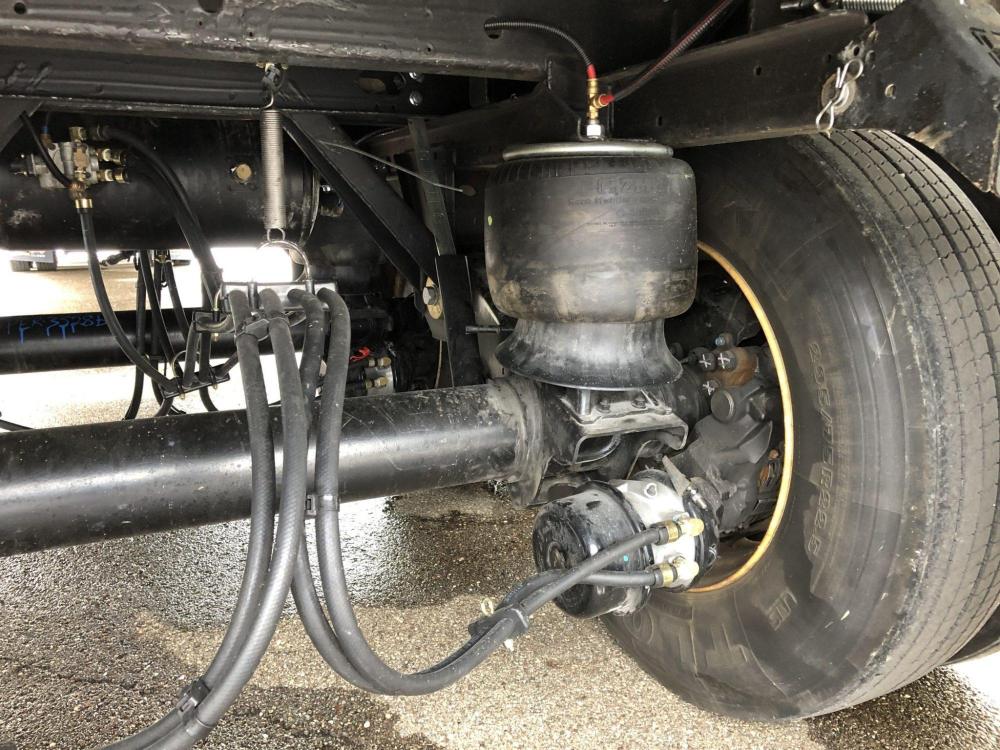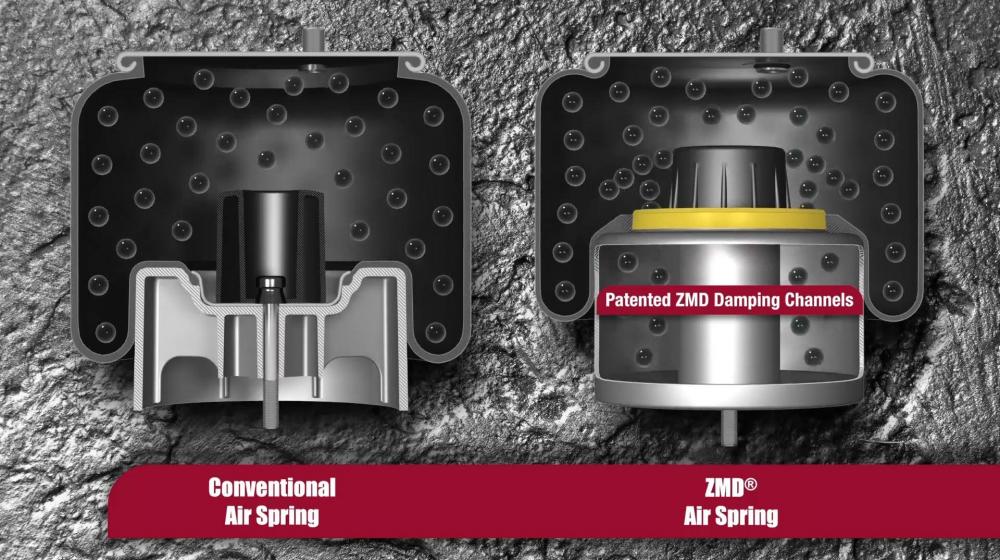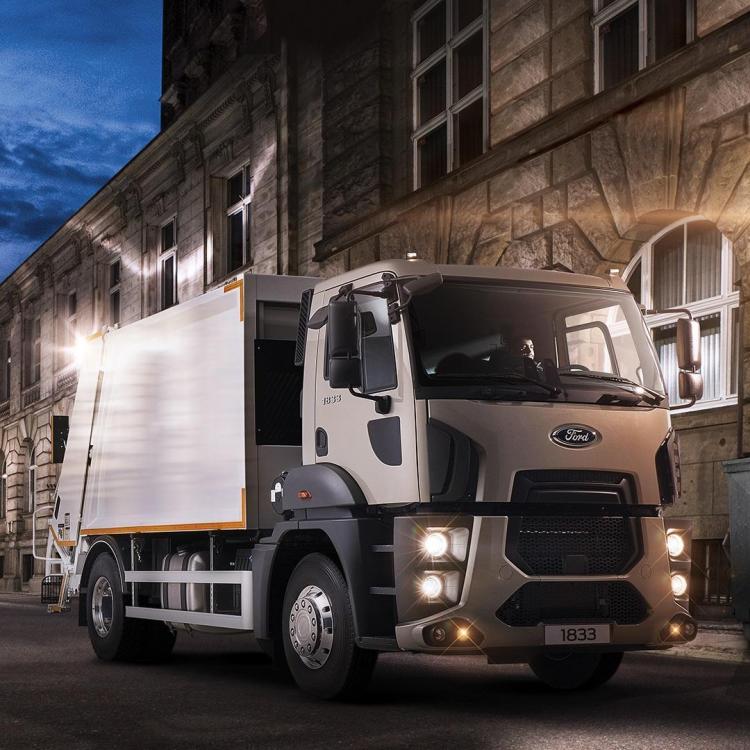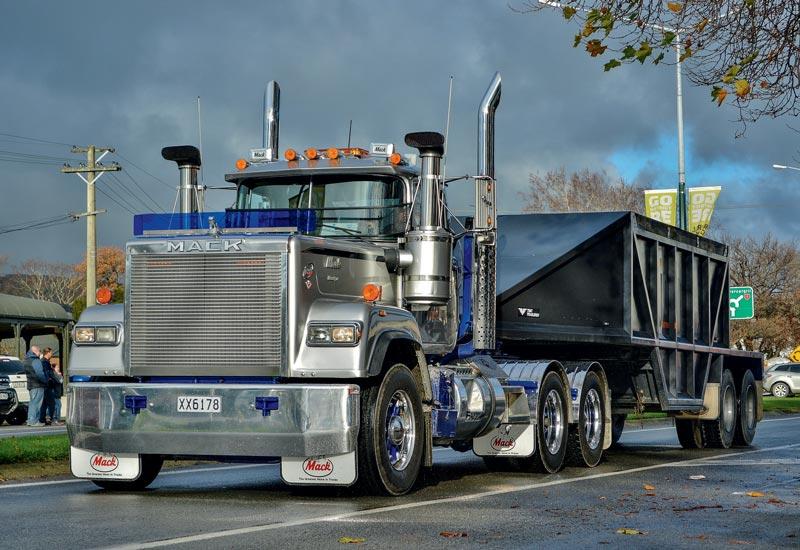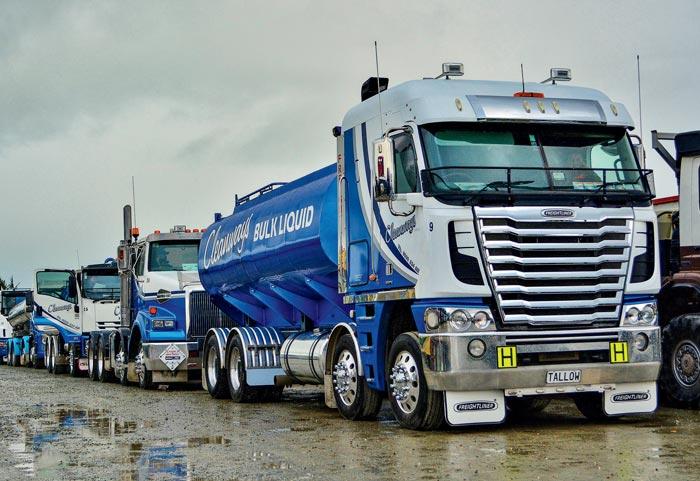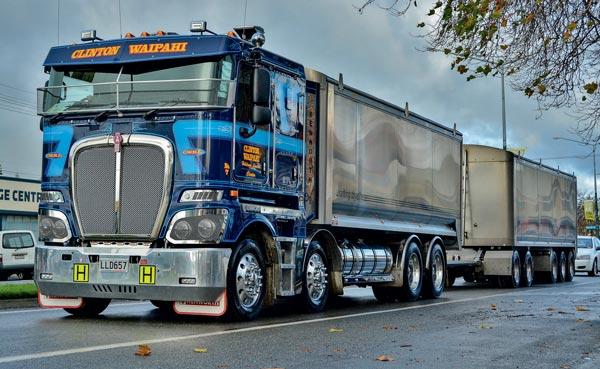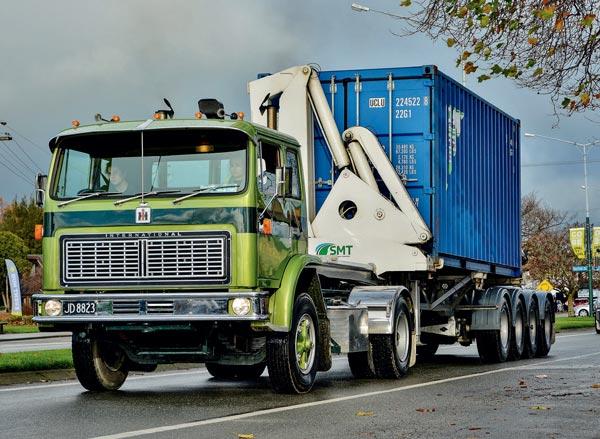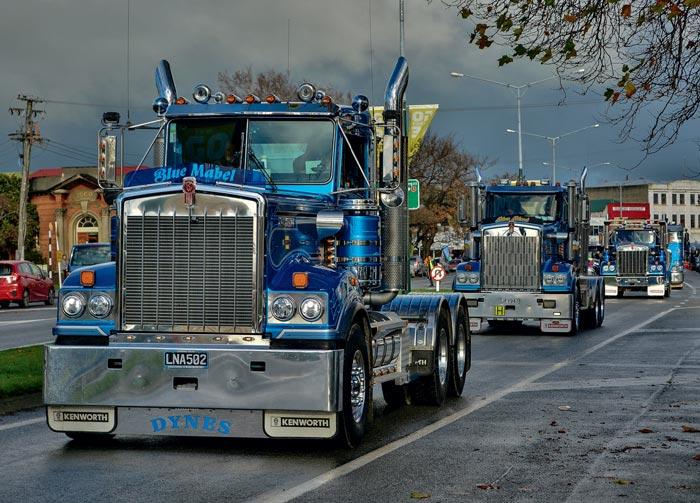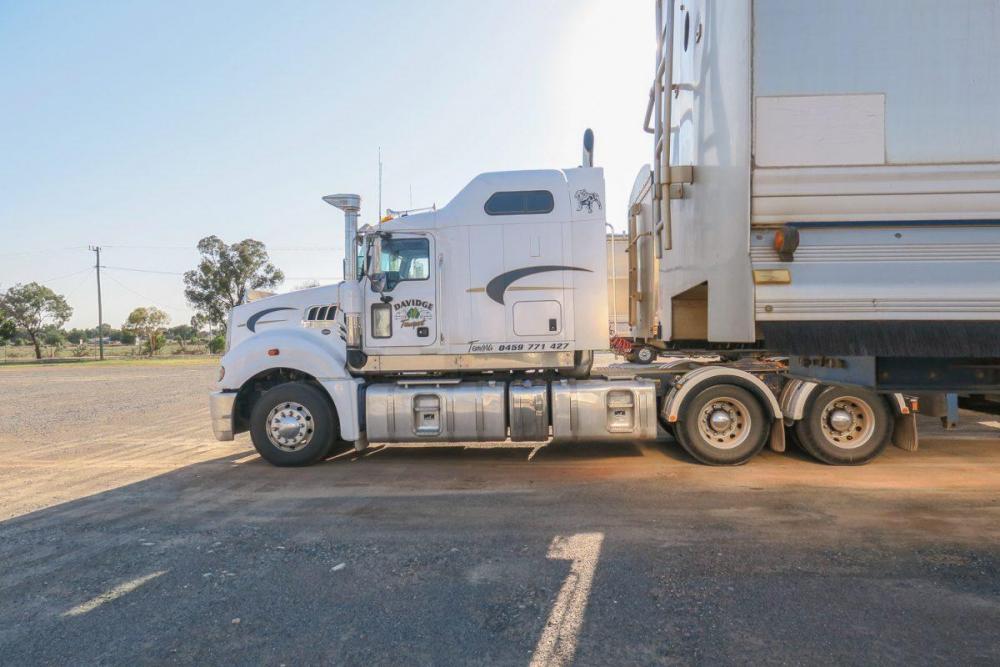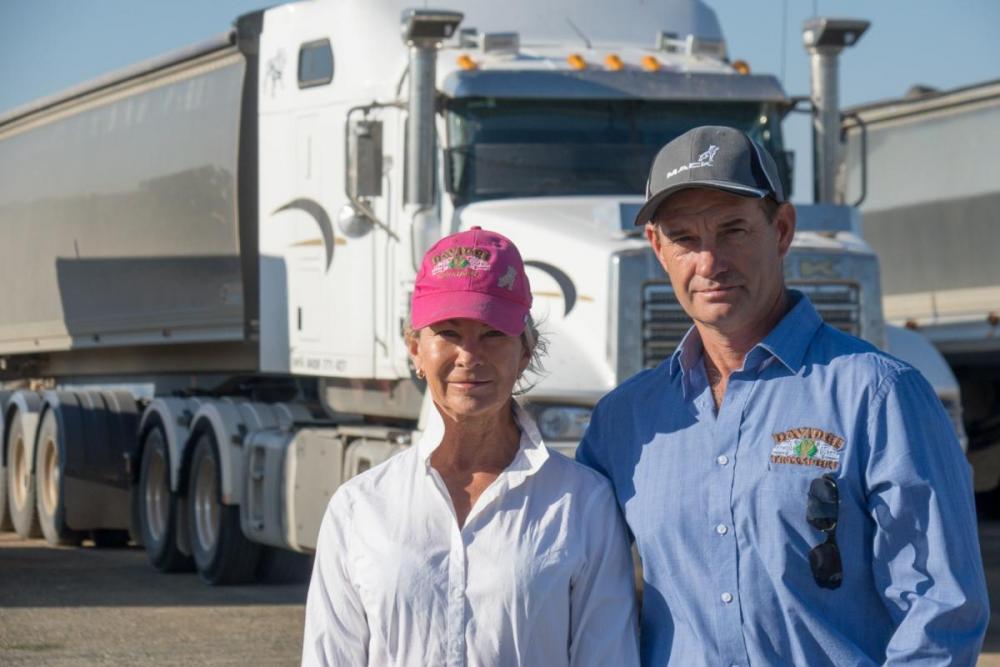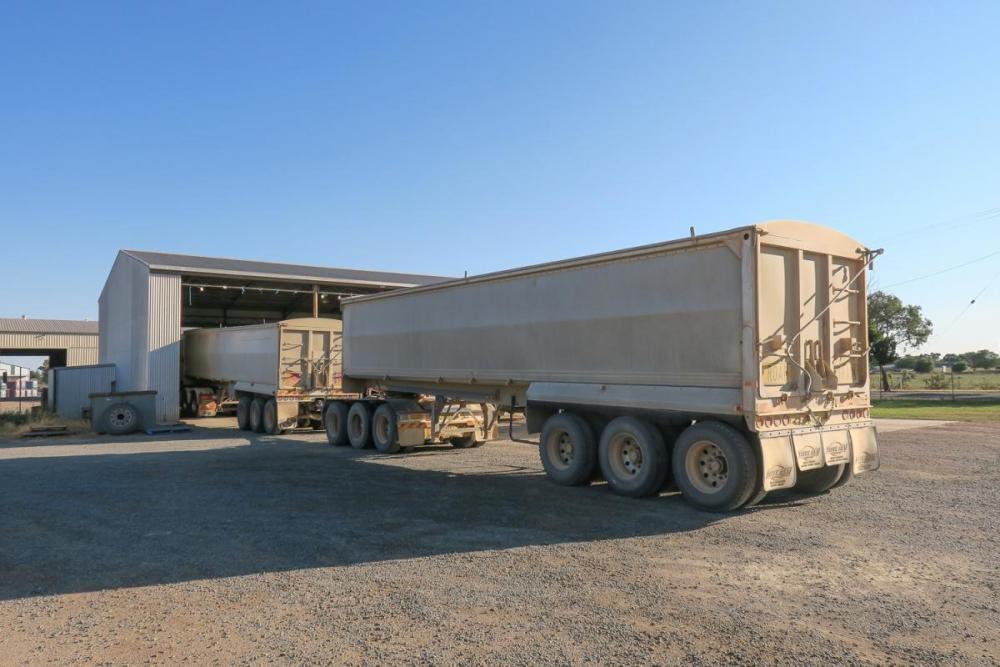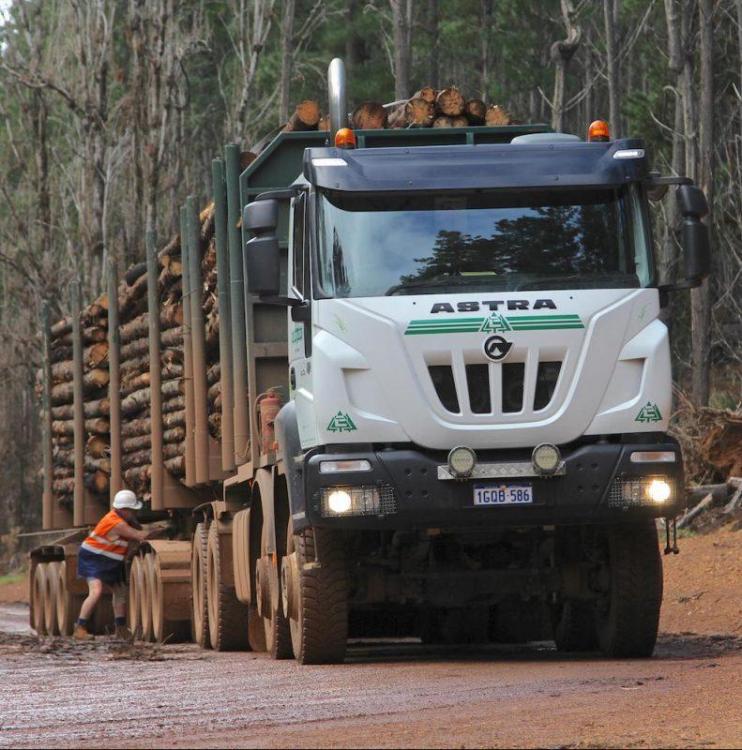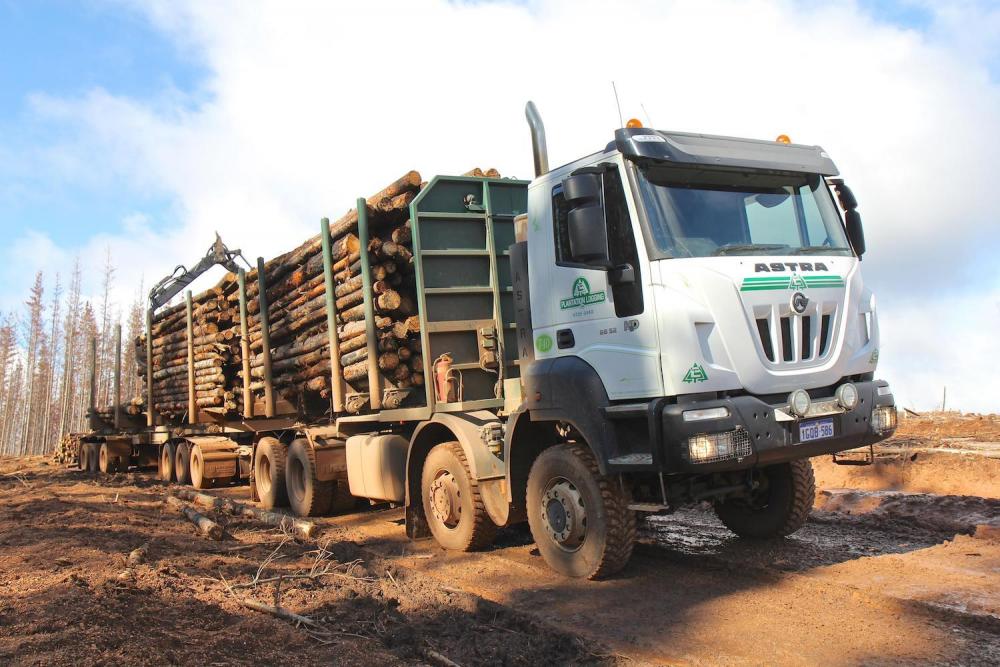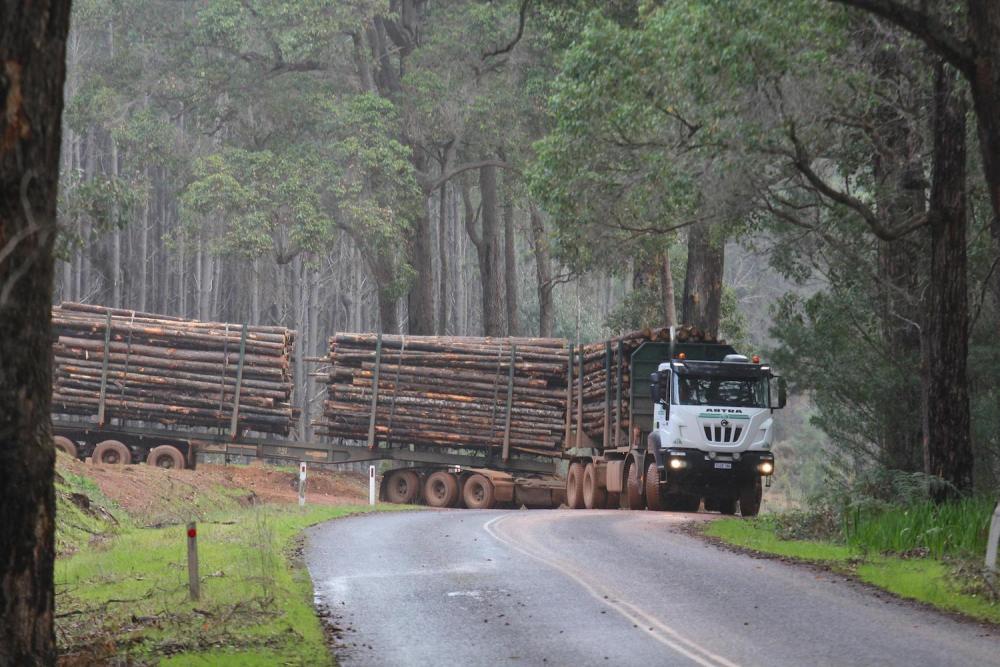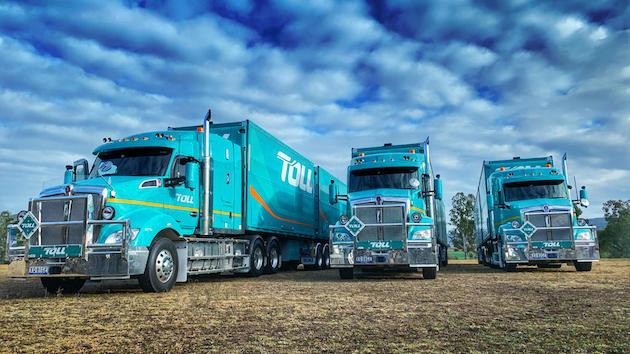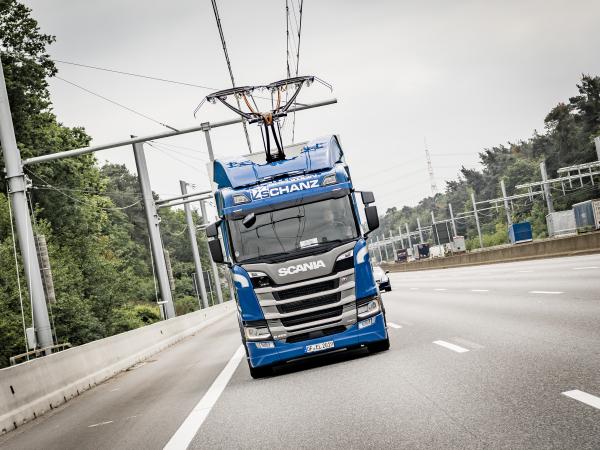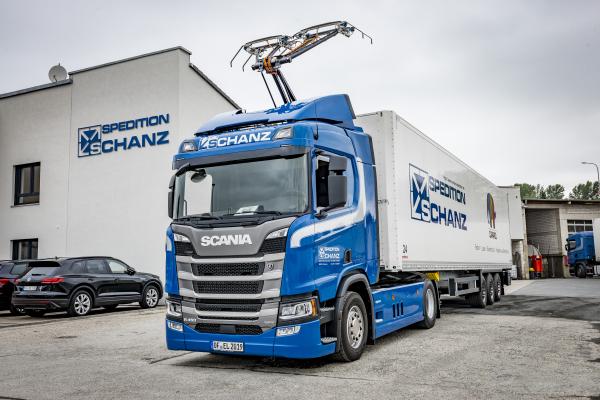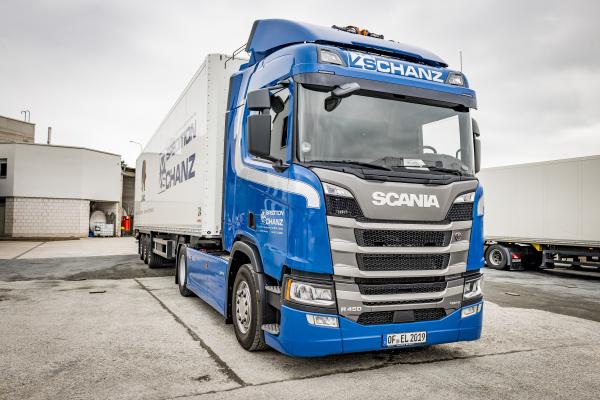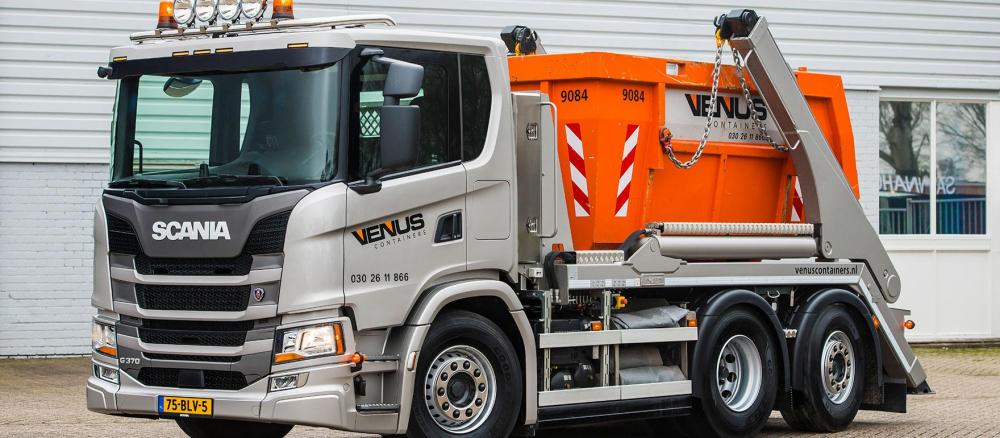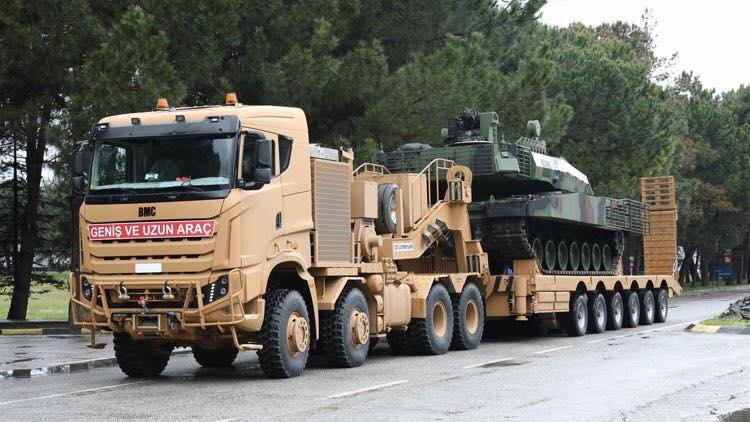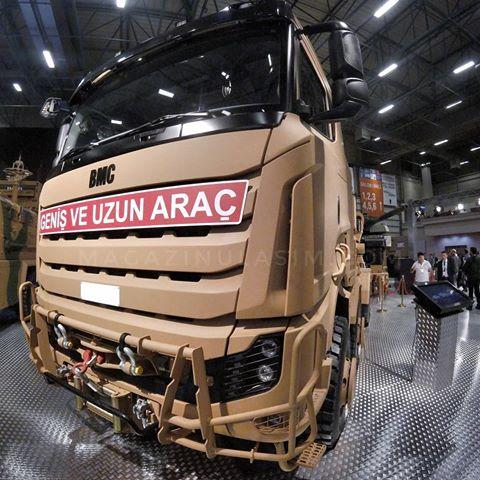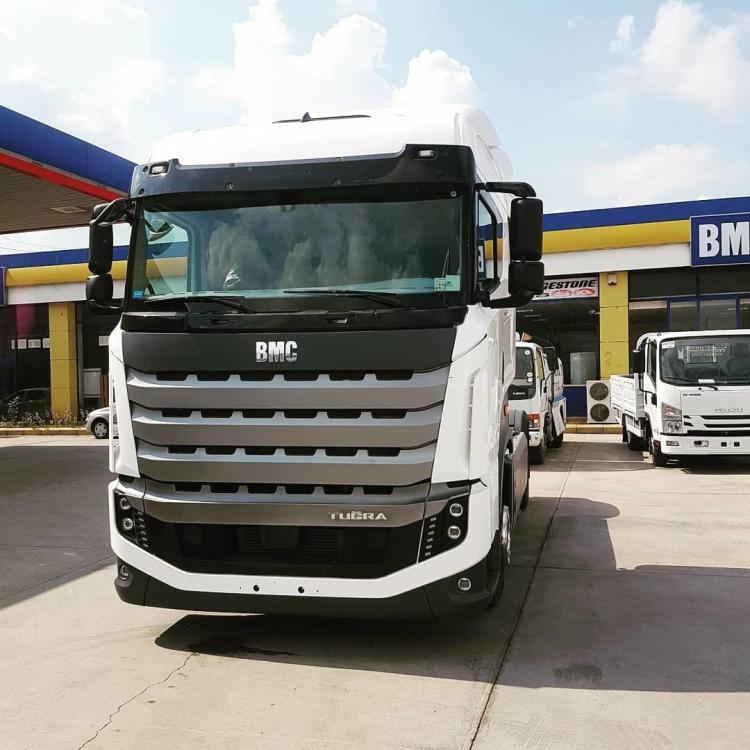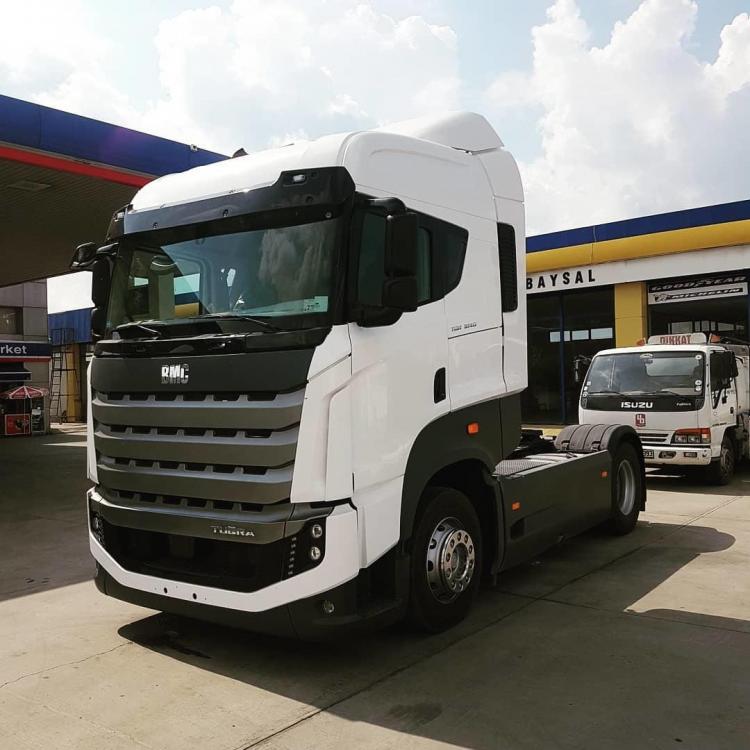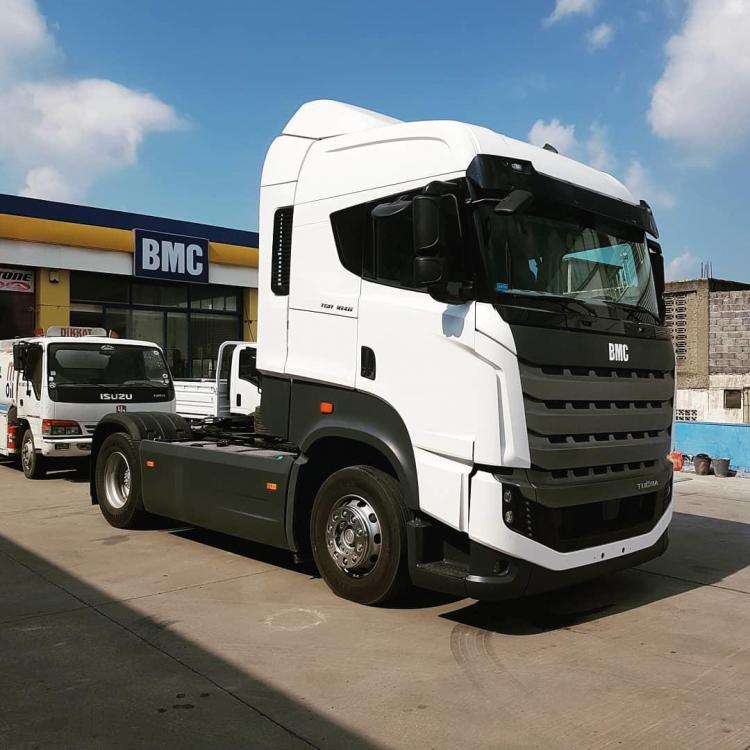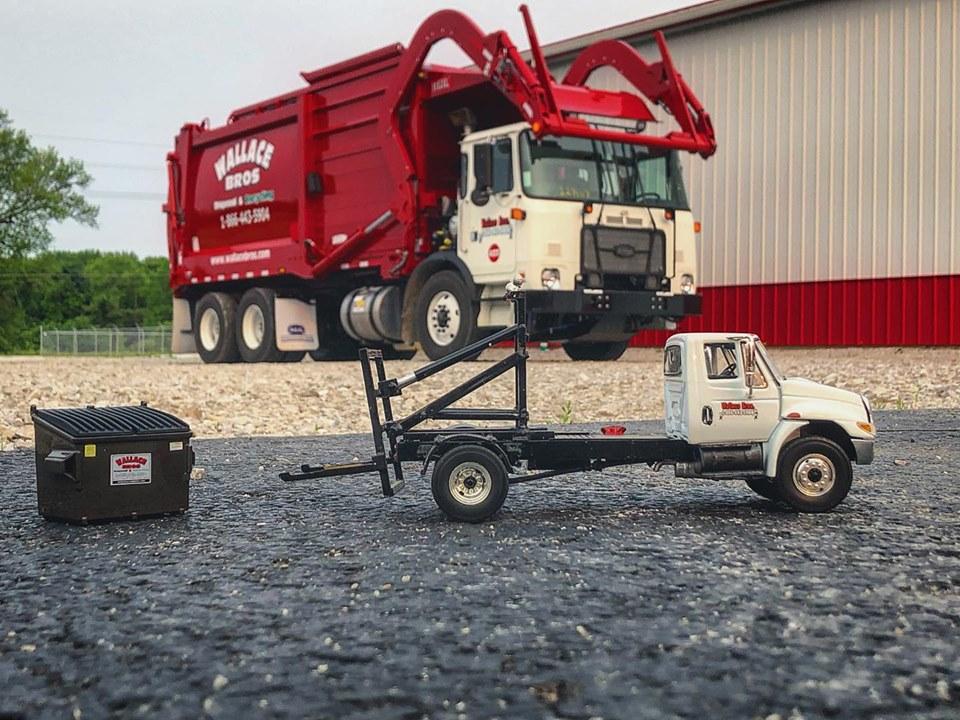
kscarbel2
Moderator-
Posts
18,544 -
Joined
-
Days Won
112
Content Type
Profiles
Forums
Gallery
Events
Blogs
BMT Wiki
Collections
Store
Everything posted by kscarbel2
-
Today's Trucking / July 24, 2019 TORONTO, Ontario — When was the last time you heard a driver say something positive about a trailer suspension? Most drivers would barely be aware that their trailers even had suspensions, but a design innovation from Hendrickson has actually prompted drivers to call the company asking what type of suspension they were pulling. They wanted to urge their bosses to spec’ the same suspension on future trailer orders. That innovation, called Zero Maintenance Damping, began life about 10 years ago and was originally conceived as a maintenance saving idea. It first appeared on the Ultraa-K suspensions in 2014, where it’s now standard. It’s also available currently on select Vantraax and Intraax systems. “There are about 150,000 Ultraa-K suspensions in service now and nearly a million ZMD air springs out there,” says Scott Fulton, director of product development at Hendrickson Trailer Commercial Vehicle Systems. “We really expected it to be just an improvement to the lifecycle cost of an air suspension, but the volumes of positive feedback we have received suggest it’s much more than that.” Fulton says they didn’t understand what was going on at first, so they took a few trailers, instrumented them up, and began studying what was going on. “We soon found that the ZMD suspension system reduced certain forces that are transmitted to the trailer and that it did improve the ride in ways we could document and understand.” The design intent with what became ZMD was to reduce the total lifecycle cost of air suspensions. They looked at various components and their life expectancy and decided the shock absorbers had to go. But shock absorbers provide the necessary damping in an air ride suspension. All suspensions require some form of damping, which resists the motion of the suspension and the trailer. In a leaf-spring pack, for example, the friction between the spring leaves provides the damping force. Since an air spring has no internal resistance, some damping mechanism is needed. Hendrickson was able to eliminate traditional shock absorbers by designing a new air spring and piston assembly. Essentially, the air bag and the piston form a single sealed air chamber separated by a several tiny air passages between the bellows and the piston. As the air spring is compressed by the road inputs, air is forced from the cavity inside the air bag into the cavity inside the piston. The resistance of the air moving through the passages between the two air chambers and the associated increase in pressure provides the damping force formerly delivered by shock absorbers. There are no more moving parts. “Testing showed this design was absolutely as effective as a hydraulic shock absorber but it came with some unique and unanticipated side effects,” Fulton says. “It improves the ride quality of the overall truck/trailer combination for reasons that we came to understand only after we launched the product.” The big difference between a spring and an air suspension is that the air suspension adapts to the load you’re carrying. More weight requires more pressure in the system as controlled by the height control valve. What doesn’t adjust is the shock absorber. It’s designed for the heaviest load that trailer is ever going to carry. With the ZMD, because the air is doing the damping, the damping rate also adjusts with the payload. Where you see the real benefit is on trailers with diminishing loads or lightly loaded trailers, because the damping rate is adjusted down along with the load the trailer is carrying. Fulton says shock absorbers are non-uniform in the way they perform damping. It collapses easily when hitting a bump and does all of its work as it extends back to its resting position, allowing the suspension to return to its ride height. “That’s how it takes the energy out of the system,” he says. “The drawback is when hitting constant bumps. The shocks compress and the wheels can come off the road. With ZMD, we can damp in both directions.” There’s yet another benefit: diminished fore and aft forces transmitted to the trailer. With the shock absorbers positioned as they usually are, roughly 45 degrees from horizontal between the trailing arm of the suspension and the body of the trailer, the shock loads experienced by the trailing arm are transmitted to the trailer as a force that results in what drivers feel as a punch to the kidneys. “We have changed the direction of the force going into the trailer from slightly forward to vertical, and we can adjust that force based on the payload,” says Fulton. “The drivers get a more comfortable ride and there’s additional protection for the cargo and trailer structure from road inputs, which helps extend the life of the trailer.” I was initially a bit skeptical about the bold claims Hendrickson was making regarding the improvements in the ride with ZMD. After a pre-ride briefing with Fulton, I understood the principles behind ZMD — forcing air through tiny openings to resist movement in lieu of mechanical shock absorbers. I understood that removing a source of forward-vectored shock loads from the van undercarriage might improve the driving experience, and I could clearly see how ditching the shocks would save a few maintenance dollars, but I honestly wasn’t prepared for the scale of the improvement in the ride. I drove two trailers on three loops around a test course through the Canton, Ohio area. The first was an empty van trailer equipped with a steel spring suspension. The second run was with an empty van equipped with an Ultraa-K suspension and ZMD technology. The third run was the same trailer with about 10,000 pounds of dunnage placed directly over the rear bogies. I used the same air-ride Volvo VNR for all three loops. The empty steel-spring trailer was predictably nasty. The road leading from Hendrickson’s gate to the freeway access was really nothing more than a loose grouping of pot-hole patches that shook one of my video cameras right off its dashboard mount. Out on the freeway, the concrete washboard continued beating on the truck, which each trip over a seam resulting in a slap in the back. While passing over a series of bridge joints at a modest speed, I could distinctly feel the three sets of axles passing over the joints, starting with the steer — thump, then thump-thump as the drives went over, and after a pause, thump-thump as the trailer axles went over the seams. There were three sets of railroad track on the route. The first two weren’t too bad, the third was brutal, with four sets of tracks, each grade crossing badly deteriorated. That one was enough to bounce the trailer axles right off the ground at just 40 km/h. The second loop around the track with the empty ZMD trailer felt about 500% better. I could still feel the potholes on the first part of the route, but they were considerably tamed by the trailer suspension. The bumps were still noticeable, but the aftershocks were gone. The washboard freeway was still bumpy, but again, I felt just the bumps as the tractor axles crossed the slabs. That jolt from the rear that I felt with the steel-spring trailer was greatly reduced. The bridge seams were barely noticeable as the trailer axles passed over. And that nasty set of tracks still nearly knocked me out of the seat as the tractor went over, but the trailer just kind of reminded me that we had just crossed over a rough set of tracks. When we returned to Hendrickson, the crew placed a 10,000-pound test load in the back of the trailer, right over the bogey, and away we went for round three. To avoid the repetition, I’ll simply say that I could no longer any input from the trailer. The bumps were just from the steer and drive axles. Traveling over the bridge seams, I felt the thump and thump-thump as the tractor went over, but I could not feel anything from the trailer. Seriously. The nasty tracks half-way around the route were also a non-event. I didn’t see the wheels come off the ground and I could barely feel the trailer axles cross the tracks. There’s was just the faintest thump from the back and absolutely no jolt to the kidneys to be felt at all. Driving along the freeway at highway speed and hitting the usual assortment of bumps was just like going over the bridge seams. I felt the tractor wheels go over the bumps, but not the trailer wheels. It was literally as if the trailer was riding on air. Now I understand what prompted those early-adopter drivers to call Hendrickson. This suspension was quite unlike any trailer suspension I have ever driven before. The real beauty of this design is that there are no moving parts, nothing to wear out over time. The air springs themselves will likely last as long as any air spring would, so five to 10 years with regular inspections. If something were to fail, or if the air passages were to become obstructed the worst-case would be the same situation as a trailer with a non-functioning shock absorber. “You’d lose the damping action, but that’s it,” Fulton says. A design change that would have saved a fleets a few hundred dollars over the typical life of a trailer air suspension could be driver recruiting and retention tool worth far more than the time and the cost of replacing a few worn out shock absorbers. Equipment editor Jim Park takes a deep dive into the ZMD trailer suspension in this Focus On video. . .
-
Link Introduces Intelligent Semi-Active Cab Suspension
kscarbel2 replied to kscarbel2's topic in Trucking News
-
Ford Trucks International / July 29, 2019 Ford Trucks does it best with competitive fuel savings at the lowest cost per tonne. #SharingTheLoad .
-
Piacenza, Italy .
-
New Zealand Trucking / July 2019 The first day of winter arrived with a vengeance in Gore, along with 81 entries for the inaugural McDonough Contracting Gore Truck Show. The cold, wet weather didn’t dampen the enthusiasm of all who gathered at Transport Repairs’ yard in Gore. A lot of time was put into preparing entries and the quality was as high as usual, with numbers up on last year; a reflection of both the work the show committee put in and a sign operators from around the south are still keen to come along in support. It is an awkward time of year, with stock trucks busy on cattle movements and log trucks having just spent a week in the bush, so there isn’t a lot of time to get trucks clean. By the end of the week there aren’t many clean trucks about, so these entrants put in an enormous effort to get gear ready for early Saturday morning. With a large number of categories, the prizes put up by a long list of sponsors was certainly appreciated, further ensuring the show’s success. All involved hope it remains as popular as it was this year. The committee is looking for more volunteers if anyone from the area is interested for future events. .
- 1 reply
-
- 3
-

-
Mack Trucks Australia / July 23, 2019 JR Stephens have been around since 1954. Mack Service Agreements helps them control their cashflow and know in advance how much you are going to pay each month. Choose a Mack Service Agreement that best suits you. .
-
Diesel News Australia / July 2019 Running a Grain Cartage Business in Country NSW is hard enough, but Steve Davidge also runs a horse breaking and training business at the same time, so Diesel News checked in on trucking out Temora way. Temora sits at the crossroads of the Goldfields way, between West Wyalong and Wagga Wagga, and Burley Griffin ay, between Yass and Griffith, in the rural heartland of New South Wales. Steve Davidge and his wife Sam run a small operation from a modest yard on the edge of town. Typical of transport businesses in the area, their operation serves the agricultural industry with sets of tippers geared to handle the cyclical changes of location and product as the seasons change. The Davidge business was formed in 1970. However, the family had been running some trucks for some time before. Originally, the family business was based on the south coast of NSW at Moruya with Steve’s father and grandfather hauling for the logging industry. The basic business started off just carting logs, but was extended after 1975 when they began to handle general haulage, in and out of Sydney, up and back from Moruya. At that time there was also a growing demand for grain in that area and they began to grain from inland NSW back down to the coast. The grain was being moved on flattop trailers, tippers, at the time, were a rarity. Sheets were laid on the bed and over the gates, then the grain was shovelled into place. “The work was fairly labour-intensive,” says Steve, dryly. “You couldn’t get a driver to do that sort work these days. I remember, when we were kids, we used to go along and help father unload oats at dairy farms with a shovel. The best part of it was when you got finished, they would give you a litre of milk to drink. “As the grain got busier, Dad just moved out here to Temora. We moved here about 34 years ago, and we just went on growing, bought a few tippers and continued to grow. The business eventually built the fleet up to about 10 Mack trucks. We had a combination of Superliners, a ValueLiner and the rest were Ultraliners. “Dad always had Macks, so when we took over, we bought three of the trucks and then bought another one a few years later. Since then we have traded two of them in on new trucks. They had taken over the family business in 2015. Two new trucks are included in the fleet, Superliners with MP 10 engines and 685hp under the hood. The cabins are a new 60 inch sleeper design which has come out of the Mack system and was one of the first to become available in Australia. With the slightly longer wheelbase, it means the trucks also have to be fitted with an extra long driveshaft, something which is a little out of the ordinary for Mack truck buyers. Steve had been driving trucks for his father as soon as he passed his truck driving test. Later on he began a career as a commodity trader in the agricultural industry. Later, Steve also spent quite a few years working as a fly in fly out logistics manager for an operation laying gas pipelines across Western and Northern Australia. “I miss hearing the air starter on the old Macks,” says Sam.” They’re not quite the same now. We used to be able to hear them from home and you would know that’s someone was off up the road. The company run four trucks these days, all of them Macks, of course. The trucks run predominately as B doubles, but the operation does run two of them as double road trains in the busy season. One of the busy periods is the gypsum season, which runs out of Balranald, delivering into the local area. Then there is the series of harvest periods around the state and interstate. “When the season is right and things are going well, we usually start up around the Queensland border,” says Steve. “We will send three or so trucks up there and then they will gradually work their way back down as the harvest moves south. We will haul down to the ports when the fertiliser is on and there’s grain to go there. However, there hasn’t been any this year, there’s nothing moving. “It’s going the other way this year, grain’s coming out of the ports into to our area. We have still been very busy this year, hauling grain out of grain stores and into feedlots and the feed mills. Later in the year, it might be different story. “In a normal year, we would be hauling grain to Melbourne, Sydney and Newcastle, and then bringing fertiliser back. Last year was a little bit lean, but we got through okay. This year is even leaner, so it’s probably going to be an even bigger struggle. We might have to look at a different set of trailers or something like that. “I remember, years ago, Dad got hold of some curtainsiders and started running them for another company to keep the wheels turning. It wasn’t a great money spinner but it kept things rolling along before the grain came back.” The two newer Macks went to work in Western Australia as road trains in the lead up to the Christmas period in 2018. This was a time when the harvest was going well over there and work was quiet in NSW. The drivers simply drove over there and stayed in WA for the two month period. .
-
Diesel News Australia / July 2019 Looking for a robust off road truck to handle the tough conditions a Western Australian logging operation add Astra to their all wheel drive working fleet. The Astra brand has had limited visibility in Australia, but elsewhere in the world has proven a useful add-on to the Iveco brand in some of the more rugged country’s truck markets. For example, it has been the top selling truck brand in Iceland. Harvesting timber requires a unique type of vehicle, especially when the plantation tracks are steep, slippery and muddy after rain, it’s an environment where 8×8 traction makes a world of difference. It was for these demanding conditions that last year, Plantation Logging Co of Bunbury WA, purchased an Iveco Astra 8×8, and now with around 120,000 kilometres on the clock, the truck from Iveco’s specialist all wheel drive arm seems to be delivering the goods. Started by Jeff Loton in 1994, Plantation Logging Co has expanded to become the largest pine tree harvesting and log haulage contracting company in the state, employing around 100 people. The shift to Astra came about due to some problems arising with the current fleet. “We’d been using another European brand truck for this short lead application, 80 kilometres from headquarters to the plantation sites but began having some longevity issues with them,” said Jeff Loton, Plantation Logging Managing Director. “This led us to start taking a look at the alternatives, we wanted to see what else was out there that could do the job and the Astra looked like it had everything we needed, it’s performed very well in the time we’ve had it. The Astra is excellent at dragging a heavy dog trailer around.” Set up as a rigid, towing a low profile six axle dog trailer, the Astra works 10 to 12 hours a day, five days per week, the combination normally operates at 68 tonnes (concessional loading on trailer applies), delivering the logs from a range of pine and blue gum plantations to sawmills in Bunbury. “With a 520hp (2400Nm) engine, the Astra has an extra 40hp available compared to the other trucks we use, despite having more power, fuel efficiency is on par,” said Jeff. “Our driver really enjoys having access to additional power, it’s noticeable in how the truck performs. The Astra’s transmission (16-speed Eurotronic AMT) also has another four gears to provide better spread of ratios for the conditions.” If the conditions require it, the Astra features hub reduction to all axles and the combination of a high tensile steel chassis and parabolic spring suspension provides articulation and traction. On the inside, the Astra features many of the benefits of its road-going Iveco counterparts to provide a comfortable ride both on and off road. The features include a spring suspended cabin, electric windows, air conditioning, a detailed multifunction instrument cluster, ergonomically-designed dashboard and 3-way adjustable, air suspended driver’s seat. .
-
Prime Mover Magazine / July 26, 2019 Logistics and commercial carrier, Linfox, has unveiled a new Lin-double configured tri-axle tipper coupled with a six-axle dog trailer for its coal run in Illawarra. The combination, pulled by a Volvo tri-drive prime mover, moves coal related products from the South32 facility on behalf of Illawarra Metallurgical Coal operations to Port Kembla for Bluscope Steel. Linfox, which has invested $20 million recently in a fleet of custom-designed trucks, engaged a team of Australian and international engineers on the unique vehicle combination. “The vehicles were designed to address the particular challenges of hauling coal in the Illawarra, especially the steep descent down Mount Ousley,” said David Keane Linfox General Manager Business Development, Resources and Industrial. “We’ve essentially combined the most powerful Volvo prime mover available with additional braking and descent control technology and higher capacity trailing equipment,” he said. Illawarra currently outpaces Sydney in population growth and with the transit route between Westcliff and Appin Colliery involving steep grades down Mt Ousley and through heavy traffic, South32 required a supply chain partner with a transport solution that minimised its impact on the community and environment. In a company statement, Linfox said it was focused on the wellbeing and capability of its drivers as it planned to reduce the number of vehicle movements on local roads by 25 per cent. The vehicle, as the company strives to increase the tonnage of coal it moves on each trip while honouring its commitment to chain of responsibility, features radar adaptive cruise control and collision mitigation technology. Linfox also confirmed it had commenced construction on a new site in Port Kembla where South32 ships coal to international markets. The project will reportedly employ 130 local workers. This will include drivers, contract managers, operational supervisors, safety officers and administrators. Global demand is increasing right now for high quality coking coal which Illawarra has an abundance of for the production of steel. .
-
- 1
-

-
Prime Mover Magazine / July 24, 2019 Thales Group has announced that its key transport partner, Toll, has launched a new vehicle fleet worth $8 million. The vehicles have been specifically designed for Thales’ requirements and feature new safety and security upgrades. “This investment represents a significant advantage for our customer, in terms of safety on the road, and also the security of that product as well,” said Thales Director of EO Services, David Thompson. “Our partnership with Thales goes back a long way, and they are a very important part of our business,” said Toll General Manager Mining – East Craig Nelson. “One of the key focuses of our journey with Thales has been around safety. “This fleet comes with state-of-the-art safety features right across from the driver’s cab through to the trailers,” he said. Toll Senior Manager Explosive Services, Rex Whip, said Toll put a lot of time and effort into designing these trucks, especially with safety and security in mind. “If I had to choose the top three devices fitted to these trucks it’d have to be the tyre pressure and heat monitors as fire is one of our greatest risks, our fatigue detection so we are able to monitor driver fatigue and use an off-vehicle monitoring system, and thirdly having cameras on the vehicle that are monitoring the driver activities, (forward) down the road and (to) the rear of the load,” he said. “From a security perspective this is very important to us.” “One of the benefits of a long contract tenure is data,” said Thales Supply Chain Director, Greg Neal. “Toll have used the data they’ve received to provide input to the specifications of these vehicles, resulting in the new fleet carrying a host of digital features. They’re being innovative and driving improved safety, security and efficiency for Thales, which is ultimately received by our customers. “Their alignment with our ambitions is where real value is created in the partnership.” .
-
Scania Group Press Release / July 25, 2019 Every day, Spedition Schanz transports 100 to 150 tonnes of paint from Odenwald to Frankfurt, travelling beneath the five-kilometre pilot catenary lines in both directions of the A5. Scania is the exclusive supplier for the trials, financed by the German Ministry for Environment, Nature Conservation and Nuclear Safety. In the coming months, four more hybrid trucks will be delivered for the pilot project in Hessen. Spedition Schanz’s Managing Directors Christine Hemmel and Kerstin Seibert are thrilled that they have been the first in Germany to receive Scania’s e-road trucks. “When asked if we wanted to join the project, we didn’t think twice,” says Hemmel. “We in the Schanz family care about the environment.” Seibert adds that Schanz family business is always eager to try something new. “The e-road technology looks very promising and we’re very excited to learn more about how it works in practice”, she says. Thomas Schmieder sits behind the steering wheel of the Scania hybrid truck, christened EL-LEON. He is one of three drivers at Spedition Schanz who have been trained on the new truck. It is no coincidence that he drives the EL-LEON; he specifically applied for a job at Schanz to drive this truck. “I’d read that Spedition Schanz would participate in the pilot project and immediately became interested. Electromobility is an exciting development – that’s the future and I want to be part of it.” The e-road pilot in Hessen will be supplemented by two additional trials in Schleswig-Holstein and Baden-Württemberg. “These tests will determine whether the e-road technology is viable in actual operations and can be implemented for goods transport with reduced carbon emissions and noise,” says Product Manager Stefan Ziegert, Sustainable Transport Solutions, Scania Deutschland Österreich. “How much CO2 can be saved? How do the trucks operate under varying conditions? How much power must be supplied not only to drive but also to charge batteries?” .
-
Scania Group Press Release / July 17, 2019 Dutch haulier Venus Containers recently took its new Scania G 370 6×2 into operation. The distinguishing feature of this truck is the ultrashort turning radius thanks to its 3.15-metre wheelbase. Venus Containers uses the three-axle truck with a steered tag axle to deliver and collect 10-cubic metre waste containers in the Maarssen area. With a trailer, an additional four containers can be carried for a total load of 50 tonnes. That Venus Containers opted for Scania has everything to do with driver preference. “Good drivers are scarce and several of them are very much in favour of Scania. If they want a Scania, there is no reason not to comply. They’re skilled and know what works best,” says owner Robbert Tammer. No compromise on maneuverability The company needed a three-axle vehicle for the heavier container work when their 15- year old Euro 3 truck was banned from entering the city of Utrecht. “But we didn’t want to compromise on manoeuvrability. Together with the dealer, we fitted all the necessary components within this short wheelbase. The result is a truck with the same characteristics as a two-axle vehicle while conforming to regulations. With this truck, we can profitably carry a 10-cubic metre container full of sand.” Because the truck is a bit heavier, Tammer decided on a G-cab. “Apart from the extra space for the driver, the G-cab also looks nicer. We ordered it with the flat roof because of low hanging branches and such. Later I realised that the lower height was cancelled out by our roof light bar. But that’s our trademark, and it features on all of our trucks.” Reinforced bumper for additional protection The vehicle has numerous extras as suggested by Venus Container’s drivers. The reinforced bumper that protrudes four extra centimetres provides slightly more protection for the grille and the headlight units. It is equipped with a blind spot and front camera for added safety when driving in cities, but it also has a camera directly above the drawbar bracket. In combination with Scania Opticruise, drivers have opted for clutch on demand. Tammer finds the first fuel results encouraging; “I can see from the weekly Scania Fleet Management reports that the truck is running even more economically than the 4×2 vehicles that we started using last year. You can see how quickly developments advance.” .
-
Ford Trucks Russia Press Release / July 26, 2019 On July 25, 2019, together with the service dealer "ATB Trans", Ford Trucks Russia held a "Ford Trucks Day" event for owner operators and regional fleet managers. The new Ford Trucks F-MAX did not leave anyone present indifferent! Ford Trucks official website in Russia: https://fordtrucks.ru/ .
-
https://www.sterlingcrane.ca/gallery.php
-
Land Line (OOIDA) / July 25, 2019 Volvo Trucks North America is recalling various models of trucks for one of two issues. One recall deals with automatic transmissions, whereas the other recall is an issue with fuses. Volvo is recalling nearly 25,000 2019-2020 VAH, VHD, VNL and VNR trucks. Affected trucks have a T-bolt clasp on the transmission air tank straps that may have been overtightened, resulting in potential deformation to the strap where the T-bolt is anchored, according to National Highway Traffic Safety Administration documents. The T-bolt could disconnect from the strap, allowing the tank to drop to the ground and become a road hazard, increasing the risk of a crash. Owners will be notified, and dealers will replace the air tank strap for free. Recalls are scheduled to begin on Aug. 12. For questions, call 800-528-6586 with recall number RVXX1904. NHTSA’s recall number is 19V-510. Volvo is also recalling several hundred 2018-2020 VAH, VHD, VNL and VNR trucks for a separate issue. In affected trucks, a fuse in the transmission circuit may blow, preventing the transmission from shifting, according to NHTSA. As with the other recall, owners will notified and repairs will be made by dealers free of charge. The fuse-related recall is slated for Aug. 19. Questions should be directed to the Volvo Trucks customer service at 800-528-6586 with recall number RVXX1903. NHTSA’s recall number is 19V-509.
-
Commercial Carrier Journal (CCJ) / July 23, 2019 Approximately 700 medium-duty and vocational trucks are being recalled by Paccar and Autocar, according to documents from the National Highway Traffic Safety Administration (NHTSA). Paccar’s recall affects approximately 343 model year 1990-2020 Peterbilt model 320 and 520 trucks. The company says these trucks were built with specific amber rear tuck signals that may also light up with the stop/tail lights when the brakes are applied. NHTSA says that rear turn signals that light up at the same time as brake lights could create confusion and impair the effectiveness of the brake lights. Paccar will notify owners of affected trucks, and for trucks with rear amber lights, dealers will add a jumper harness between the chassis electrical harness and amber tail lights for free. Owners can contact Paccar customer service at 1-940-591-4220 with recall number 19PBC. NHTSA’s recall number is 19V-452. Autocar’s recall includes approximately 357 model year 2013-2018 Xpeditor tractors in which the drive shaft support cross member could fail. If the cross member fails, the components that it supports could come loose from the truck. Autocar will notify owners of affected trucks, and dealers will install additional support brackets and cross members and replace any damaged components for free. Owners can contact Autocar customer service at 1-888-218-3611 or 1-877-973-3486 with recall number ACX-1906. NHTSA’s recall number is 19V-456.
-
Trump hits out at WTO developing economy designations Financial Times / July 26, 2019 Donald Trump has launched a new broadside against the World Trade Organization (WTO), saying the Geneva-based body allowed too many countries to claim the status of a developing economy and special treatment that damaged the global trading system. In a memo to Robert Lighthizer, the US trade representative, on Friday, Mr Trump wrote that the WTO was based on an “outdated dichotomy” between developing and developed economies that needed to be addressed quickly — and was in “desperate need for of reform”. In the past, Mr Trump has threatened to withdraw the US from the WTO unless it changes, as administration officials have criticised the organisation’s negotiating record, dispute settlement system and struggles in ensuring that countries disclose new subsidy measures. Trump administration officials have also been unhappy that many countries — including China — obtained developing country status at the WTO, which allows them to operate under different rules than advanced economies in certain areas. In Friday’s memo, Mr Trump took the frustration to a higher level, saying Mr Lighthizer should “use all available means to secure changes” at the WTO that would prevent countries benefiting from “flexibilities” deriving from developing economy status. As well as China, Mr Trump singled out a series of other countries that he thought should not be classified as developing, including Asian city-states such as Hong Kong, Singapore and Macau, as well as Gulf countries such as Kuwait, Qatar and the United Arab Emirates. He also said Turkey, South Korea and Mexico claimed the status of a developing nation, even though they were part of the OECD group of advanced economies. “While some developing country designations are proper, many are patently unsupportable in light of current economic circumstances,” the US president wrote, adding that their designations harmed other truly developing nations. Mr Trump also outlined the benefits that came from having developing economy status at the WTO, including procedural advantages in disputes, softer tariff cuts, the ability to maintain export subsidies and weaker commitments in negotiations. Mr Trump asked Mr Lighthizer to update him on his “progress” in clamping down on the use of developing country status at the WTO within 60 days — but said that if there was no breakthrough within 90 days, the US would no longer treat certain countries as developing and not support their membership in the OECD.
-
BMC is the smallest Turkish truckmaker. They have limited funding, but like Ford-Otosan are enthusiastic about heavy trucks. Nice people. Funny that Austin started them off.
-
Difference between Adults and Kids? The size of their toys. Thanks to Wallace Brothers Disposal & Recycling. Always Up - Autocar Trucks .
-
New Chevy Silverado diesel outpaces rivals: 33 mpg on highway Richard Truett, Automotive News / July 25, 2019 DETROIT -- The Chevrolet Silverado 1500 diesel rolls into the 2020 model year with the highest EPA-certified fuel economy ratings ever given to a full-size pickup: 23 mpg city/33 highway/27 combined. The 2020 Silverado 1500 debuts General Motors' new diesel engine, a 3.0-liter Duramax turbocharged inline six-cylinder rated at 277 hp and 460 pound-feet of torque. The powerplant also will be available in the GMC Sierra. In the Silverado, the optional engine adds $2,495 to the sticker price of LTZ and High Country models, and $3,890 to the cost of LT and RST. The Silverado diesel is combined with a 10-speed automatic transmission and has a fuel-saving stop-start system. The Ford F-150 diesel held the top spot on the pickup fuel economy leaderboard for the 2019 model year with an EPA rating of 22 mpg city/30 highway/25 combined. Ram this summer will offer the only other full-size light-duty diesel pickup when it launches a revised version of its 3.0-liter EcoDiesel V-6, which was rated at 20 mpg city/27 highway/23 combined in 2017, when it was last sold. Toyota, Nissan and Honda do not offer diesel engines in their light-duty trucks, though one version of the Nissan Titan has a Cummins diesel engine and is considered a heavy-duty truck, like the Ford F-250. How long on top? Silverado will likely hold the fuel economy title for the foreseeable future. The F-150 would need expensive major upgrades to eclipse the Chevy truck. Ram, coming from back of the pack, would need to boost highway fuel economy by more than 20 percent to pass Silverado's highway rating. With the addition of the Silverado 1500 diesel, Chevrolet boasts the industry's largest diesel lineup, with the fuel-saving engine available in the midsize Colorado, heavy-duty Silverado and new medium-duty Silverado. Chevrolet says the 1500 diesel can tow 9,300 pounds and haul 1,870 pounds of cargo in its bed. Sales are expected to start in the fall. More than drivetrain Tim Herrick, Silverado's executive chief engineer, said the diesel's fuel economy rating is the result of more than the efficient drivetrain. While the Silverado has taken its share of criticism for its busy styling, Herrick, during a walk-around of the truck, explained how, for instance, the air curtains on the lower front fenders improve aerodynamics. "The proportions of the truck, the roofline, the mirrors, air curtains, everything was in line with getting the aerodynamics that could get us great fuel economy," he said. Herrick said the truck has a driving range of more than 600 miles on a full tank. Although the full model year EPA fuel economy guide is not yet published, the Silverado diesel has a reasonable shot at becoming the most fuel efficient pickup regardless of size. No two-wheel-drive pickup in the 2019 guide has a higher ranking, and all competitors are far behind. Ironically, the Silverado diesel's fuel economy is higher than those of the company's smaller, lighter Chevrolet Colorado and GMC Canyon. Those pickups also can be ordered with diesel engines, but their highest fuel economy ratings are 20 mpg city/30 highway/23 combined.
BigMackTrucks.com
BigMackTrucks.com is a support forum for antique, classic and modern Mack Trucks! The forum is owned and maintained by Watt's Truck Center, Inc. an independent, full service Mack dealer. The forums are not affiliated with Mack Trucks, Inc.
Our Vendors and Advertisers
Thank you for your support!


